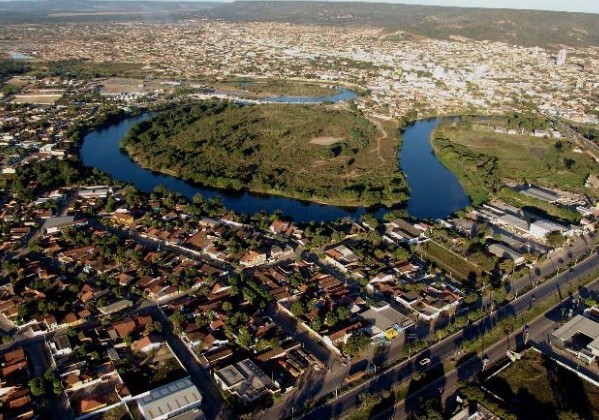Este post também está disponível em:
Português
English
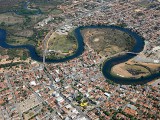
The biggest event in the city of Barreiras, is the micareta Barreiras Folia, an off-season Carnival that attracts mainly tourists.
The same applies to Carnival and June festivals, when Bahia forgets the axé and boils to the rhythm of forró.
To the west of the São Francisco River, on the banks of its tributary the Rio Grande, is the city of Barreiras.
More geared towards business tourism than leisure, as it is the main political and economic centre of the region, the city holds surprises for those who want to find unusual landscapes and experience new adventures.
In the vicinity of Barreiras there are archaeological sites, mountains good for trekking, waterfalls and rock walls for rappelling, rapids for rafting and caves. Its rivers are great for fishing, canoeing and float-crossing.
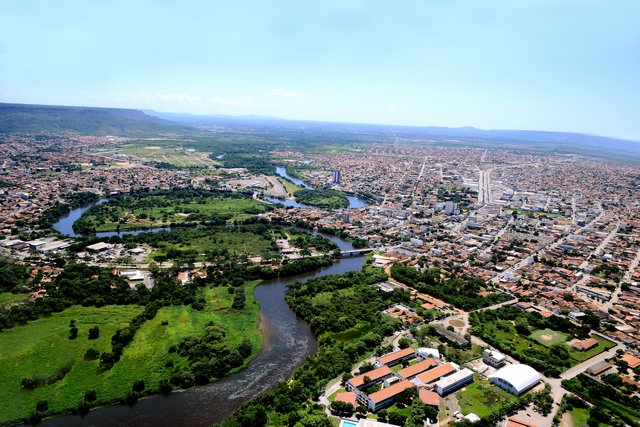
Barreiras is a Brazilian municipality in the state of Bahia, emancipated on 26 May 1891.
See the map Caminhos do Oeste.
Rio de Ondas is one of the natural beauties of Barreiras in Bahia with its strong rapids. Rio de Ondas is one of the main tourist attractions in western Bahia. It is worth visiting the Country Club Rio de Ondas, the Chalés dos Buritis and Três Bocas.
1. History of Barreiras in Bahia
The lands of the current municipality of Barreiras were part of the immense sesmaria of Antônio Guedes de Brito – the founding count of the Morgado da Casa da Ponte. The lands that were suitable for ploughing and breeding were sold in the 17th century by his descendants to José Alves Martins, Domingos Afonso Serra and others, leaving the plateaus of the mountains vacant.
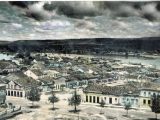
The second of them, Domingos Afonso Serra, made the Tapera Farm, where he raised cattle. After his death, the farm was inventoried and sold to several people, when the first dwellings are thought to have appeared.
In 1850, the boatman Plácido Barbosa, considered to be the pioneer of the municipality, lived in a small house near the port, on land owned by Colonel José Joaquim de Almeida, and together with his boss, Francisco José das Chagas, who lived half a league away, he took care of receiving and unloading the incoming boats, whose goods he sent in troops of animals to neighbouring towns in the state of Goiás or to Fadas da Ribeira.
In 1880 it was a village with 20 mud or adobe huts. The great abundance of mangabeira trees in the local forests, from whose sap rubber was made, was a definite factor in its growth and a new economic activity, through which the small village was able to progress more rapidly and obtain, the very next year, 1881, the creation of its parish.
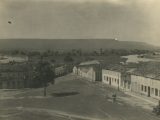
After 10 years of prosperity, it became a peace district of the municipality of Angical, by virtue of a municipal law of 20 February 1891. It then gained the category of village, to which it was elevated by State Law No. 237 of 6 April 1891, which also created the respective municipality, with territory dismembered from that of Angical.
The village and the Municipal Council began to function on 26 May 1891, while the “Forum” was established in August of the same year.
The municipal seat acquired the status of a city by State Law No. 449 of 19 May 1902, and was invested in this category on 15 November of the same year, when it already had more than 630 houses and 2,500 inhabitants.
On 15 March 1943 it began operating a branch of Banco do Brasil, the first bank in the city.
1.1. History and Culture
The presence of man in Barreiras dates back to prehistoric times. Archaeological sites, with significant material for the study of the presence of man, in the region. They were found.

Funerary urns, skeletons, weapons and chipped and polished stone objects are now part of the collection on display at the Municipal Museum created by Mayor Antônio Henrique. The cave paintings left on the walls of the caves are other traces bequeathed by these inhabitants.
They are important finds that started archaeological research in the region.
In 1908, a weekly newspaper “Correio de Barreiras” was published and edited by Tipografia Lima. In 1918, Geraldo Rocha inaugurated the Cine Teatro Ideal, where auditorium programmes and musical shows were a great success, under the command of the talented Mário Cardoso.
At the beginning of the 20th century, progress arrived in Barreiras and left its marks in the imposing mansions of neoclassical architecture. A true architectural monument, which partly survives to this day.
In education, the Padre Vieira College, the great work of Father Luís Vieira and Professor José Seabra de Lemos, which celebrated the fiftieth anniversary of its foundation in 1998, is a heritage of Barreiras education.
1.2. Illustrious children of Barreiras
Among the sons of Barreiras, the former governor of the state, Antônio Balbino and Professor Hideraldo Dwight Leitão stand out.
2. Information about Barreiras
It is the most populous municipality in the west of Bahia, it stands out in grain production.
With three rivers and two waterfalls – Cachoeira do Acaba-Vida (“for its height”) and Cachoeira do Redondo – in its municipality, it has little public and private investment in the quality of life of its population, with concentrated income and little education at the base of the population.
2.1. How to get there
Barreiras can be reached by daily flights from Salvador or Brasilia. The main road accesses are: BR 020 (Brasília/Barreiras), BR 242 (Salvador/Barreiras) and BRr 135 (Piauí/Barreiras).
Buses depart daily at various times. The airline Abaeté operates flights from Monday to Friday from Salvador and Brasília. From 5 March 2007, Passaredo will also operate flights from Monday to Friday on the route Ribeirão Preto/Brasília/BARREIRAS/Salvador.
2.2. Climate
Climate type: dry, sub-humid and dry. Annual temperature: average 24.3º, maximum 31.5º, minimum 20.3º. Annual rainfall: average 1018mm, maximum 1684; minimum 295mm. Rainy season: November to January Drought risk: medium to low Natural light is abundant throughout the year. Winds vary from weak to moderate for most of the year.
2.3. Relief
Central plateau, plateaus of the plateau with an average altitude of 435m above sea level.
2.4. Soil
The soils have a medium sandy texture, with yellowish red latrossolo being the predominant one.
2.5. Vegetation
The predominant vegetation is the open arboreal cerrado without gallery forests. Smaller scale gallery forests are located in the Rio Grande Valley.
2.6. Boundaries
The municipality of Barreiras is bordered by: To the west with the state of Tocantins and the municipality of Luís Eduardo Magalhães To the east with the municipalities of Angical and Catolândia To the north with the municipality of Riachão das Neves To the south with the municipality of São Desidério.
2.7. Hydrography
The municipality is rich in water resources.
The Rio de Ondas, Rio de Janeiro and Rio Branco are the main ones, and form the Rio Grande basin that bathes the city, and is the largest basin on the left side of the São Francisco River. Barreiras has an ecological sanctuary with enormous potential for developing ecotourism.
Bahia.ws is the largest tourism and travel guide for Bahia and Salvador.
